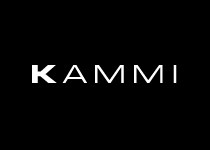KAMMI
Shoes
The project Kammi began as a cooperative from the idea of a group of operators in the retail world of Italian shoes, convinced that is was necessary to evolve and overcome the model of independence...
The project Kammi began as a cooperative from the idea of a group of operators in the retail world of Italian shoes, convinced that is was necessary to evolve and overcome the model of independence of the individua retailer, which had become outdated and counterproductive. To create a really strong association with a strong "bargaining power" in this field had already been the underlying objective of the lombard consortium Centro Moda Calzature, merged in 1981 into the project Kammi to acquire a more important profile and go national. Kammi has always believed in a joint effort created by individuals. People with creativity, entrepreneurial spirit and experiences different from each other, but able to focus on their great individual heritage to form a compact team that can compete more effectively in today's market.Brand Details
Brand Strategy
Market segment
Mass Market
Core business
Shoes
Targets
Men, Women
KAMMI Financial Report 2024
Last fiscal year ended on December 31, 2011
